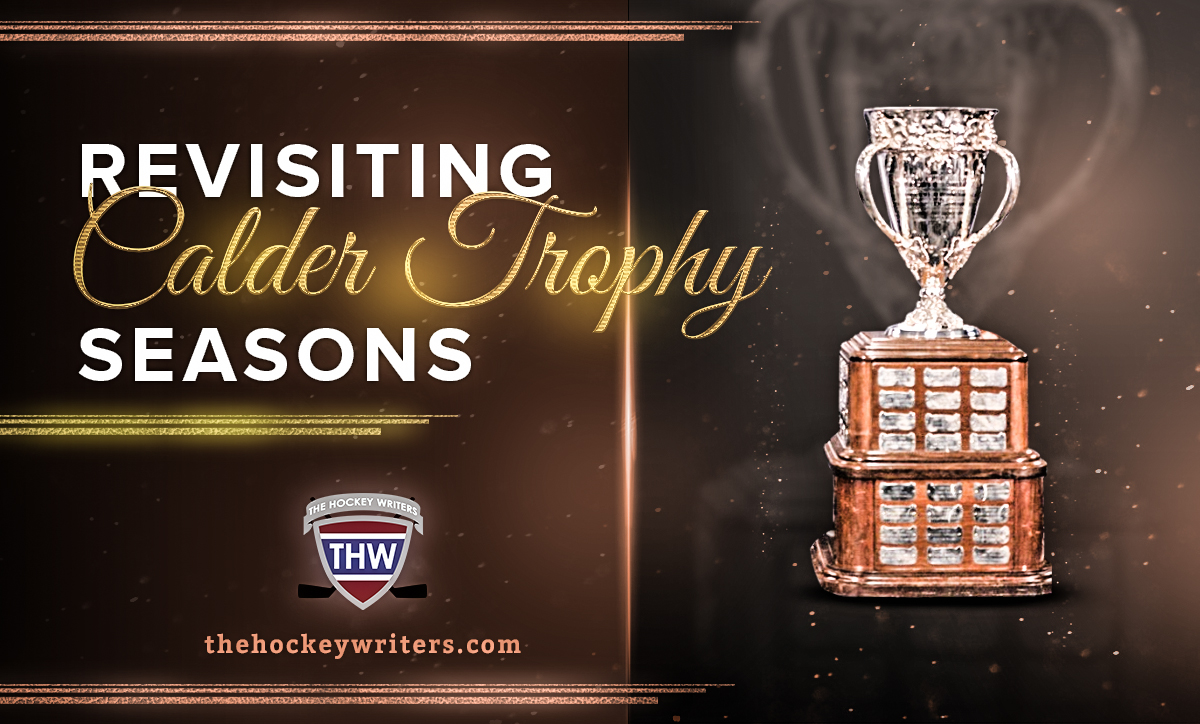He was commonly referred to as Cully Dahlstrom, but Carl Sidney Dahlstrom was an American-born hockey player who took an extended route to the NHL. Born in Minneapolis, Minnesota on July 3, 1912, Dahlstrom first played professionally in the Central Hockey League (CHL).

While his road to the NHL was unconventional in a way, Dahlstrom’s career was defined by a strong rookie season with the Chicago Black Hawks. When he finally debuted with the Black Hawks in 1937, it kicked off a career that would span 342 NHL games — starting with a rookie campaign that won him the 1937-38 Calder Trophy as rookie of the year.
Cully Dahlstrom’s Rookie Run
It was November 4, 1937, when Dahlstrom made his NHL debut for the Black Hawks as a 25-year-old against the New York Americans. It was a 3-0 loss to the Americans and — obviously — Dahlstrom was held pointless.
It wasn’t until his fourth career game, on November 13, that he tallied his first career point. Once again, it came in a losing effort — this time at the hands of the Toronto Maple Leafs — but it was his first career NHL goal and would open the gates to his Calder-winning season.
Related: Revisiting Calder Trophy Seasons Collection
Dahlstrom would go on to play in 48 games in 1937-38 finishing with 10 goals and 19 points during the regular season. He finished seventh on the team in scoring and tied for fourth in goals with Doc Romnes.
He topped Maple Leafs’ rookie Murph Chamberlain in scoring with Chamberlain finishing with four goals and 16 points. Dahlstrom was awarded the rookie of the year honours and added another three goals and four points in 10 playoff games helping the Black Hawks to a Stanley Cup win in his first NHL season.
It would be the only Stanley Cup he would win in his eight seasons with the Black Hawks and the Calder Trophy was the only individual award he was awarded over his career as well. Still, he had a successful professional career that eventually led to him being honoured in another way by U.S.A. Hockey.
Cully Dahlstrom’s Professional Career Led to Hall Honours
His professional career didn’t just consist of his eight NHL seasons. In fact, Dahlstrom started with the Minneapolis Millers of the CHL where he played three seasons — also having a tryout with the Boston Bruins following his second year with the Millers.
He tallied 25 goals and 50 points in 100 regular season games for the Millers before making the switch to the St. Paul Saints of the CHL. He had 36 points that season and the following year, the Saints made the jump to the American Hockey Association (AHA) where he played two more seasons and had 85 points in 93 games — including two seasons of 20-plus goals.
It was there that he was really recognized. A scout for the Black Hawks, Frederic McLaughlin, had seen Dahlstrom play and after some debate with the Hawks’ coach was convinced to sign Dahlstrom. It wasn’t, however, until the Black Hawks selected him in an Inter-League Draft in May 1937 that he finally got a chance to really crack the NHL lineup. The rest is history.
Over his career, Dahlstrom was named a CHL second-team all-star in 1935 and an AHA first-team all-star in 1936. That, along with Calder Trophy and Stanley Cup win, landed him a seat in the United States Hockey Hall of Fame where he was inducted in 1973 as part of the inaugural class.
Cully Dahlstrom’s Career Ended With a Trade
It may not have been the way he wanted to go out, but following the 1944-45 season in which he only tallied six goals and 19 points in 40 games, Dahlstrom was traded by the Black Hawks to the Seattle Ironman of the Pacific Coast Hockey League (PCHL) for cash. He never played a game for them and retired instead.
His NHL career ended with him scoring 88 goals and 206 points in 342 regular season games, adding 14 points in 29 playoff games. While he might not be the most recognized name on the list of former Calder Trophy winners, Dahlstrom’s name will forever be engraved in NHL history as the top of his class in 1937-38.
Sign up for our NHL History Substack newsletter
